Sensation & Perception Flashcards Review
1/63
There's no tags or description
Looks like no tags are added yet.
Name | Mastery | Learn | Test | Matching | Spaced |
|---|
No study sessions yet.
64 Terms
psychophysics
the branch of psychology that deals with the effects of physical stimuli on sensory response
Absolute threshold
the minimal amount of stimulation needed to detect a stimulus and cause the neuron to fire 50% of the time; E.g. the softest sound you can hear or the dim light you can just barely see
Signal detection theory
Examines the four possible outcomes of each trial in a detection experiment:
→ Hit: the signal was present and the participant reported sensing it
→ Miss: the signal was present but the participant did not sense it
→ False alarm: the signal was absent but the participant reported sensing it
→ Correct rejection: the signal was absent and the participant did not report sensing it
Discrimination threshold
the ability to distinguish the difference between two stimuli
Just Noticeable Difference/Difference Threshold
the minimum amount of distance between two stimuli that can be detected as distinct/how much something must change before you note the difference; E.g. you notice your friend’s perfume got a little stronger
Weber’s Law
the greater the magnitude of the stimulus, the larger the differences must be to be noticed; must vary by constant percentage, not constant amount
Subliminal perception
a form of preconscious processing that occurs when we are presented with stimuli so rapidly that we are not consciously aware of them
priming
preconscious processing
Tip-of-the-tongue phenomenon
a form of preconscious information processing in which we try to recall something that we already know is available but is not easily available for conscious awareness
receptor cells
specialized cells designed to detect specific types of energy
the receptive field
the area from which our receptor cells receive input
transduction
when signals are transformed into neural impulses
Sensory coding
the process by which receptors convey such a range of information to the brain
The two types of dimensions a stimulus has:
qualitative and quantitative
Qualitative dimension
coded and expressed by which neurons are firing; E.g. neurons firing in the occipital lobe would indicate that the sensory information is light and neurons firing in the temporal lobe might indicate that the sensory stimulus is sound
Quantitative dimension
coded by the number of cells firing; bright lights and louds noises involve the excitation of more neurons than those brought on by dim lights and quiet noisesS
Single cell recording
a technique by which the firing rate and pattern of a single receptor cell can be measured in response to varying sensory input
Visual sensation
occurs when the eye receives light input from the outside worldd
distal stimulus
the object as it exists in the environment
proximal stimulus
the image of an object on the retina
Cocktail Party Phenomenon
hen you're at a party and everyone is talking loud but then someone calls your name from across the room and your attention involuntarily switches to the person that called your name/ the direction it came from.
Bottom-up processing
starting with what you see and processing it from there
Top-down processing
starting with prior knowledge on what your seeing it and judging it by that
Parallel Processing
thinking about many aspects of a problem simultaneously, the brain's natural mode of processing things, used to recognize faces
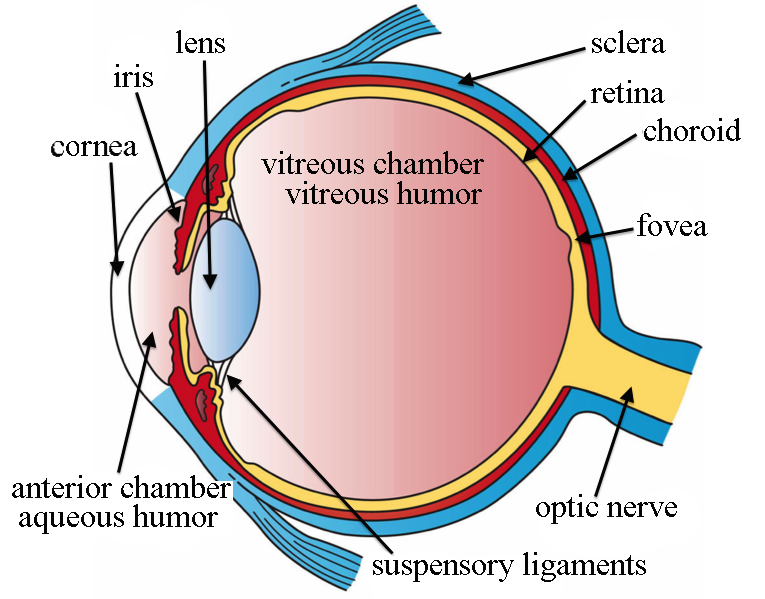
Cornea
protective covering; focuses light into the eye
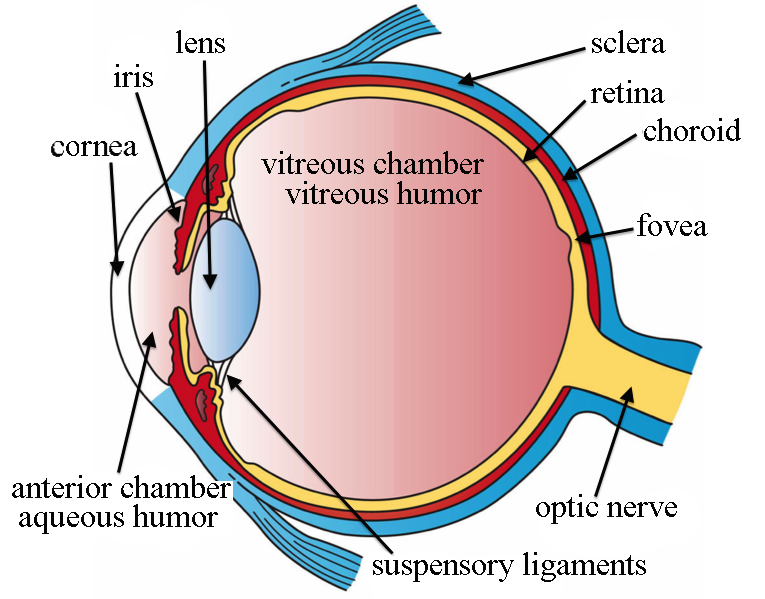
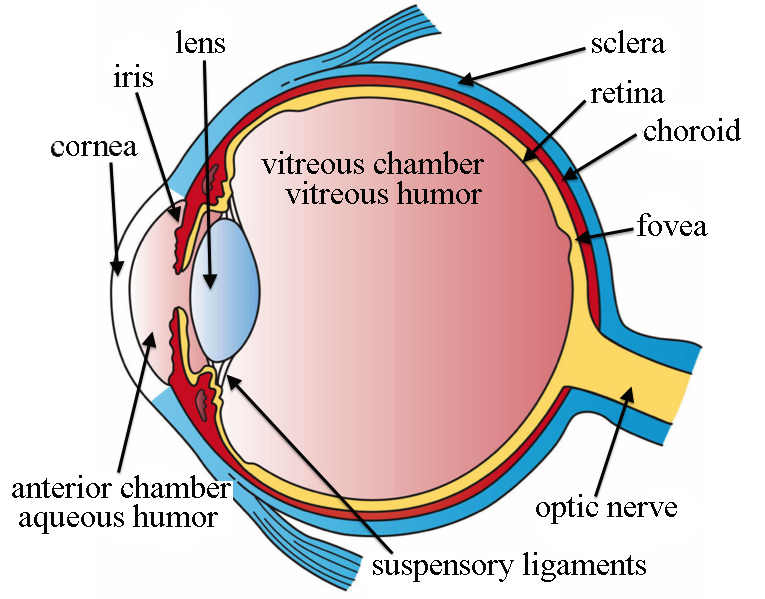
Pupil
lets light into the eye
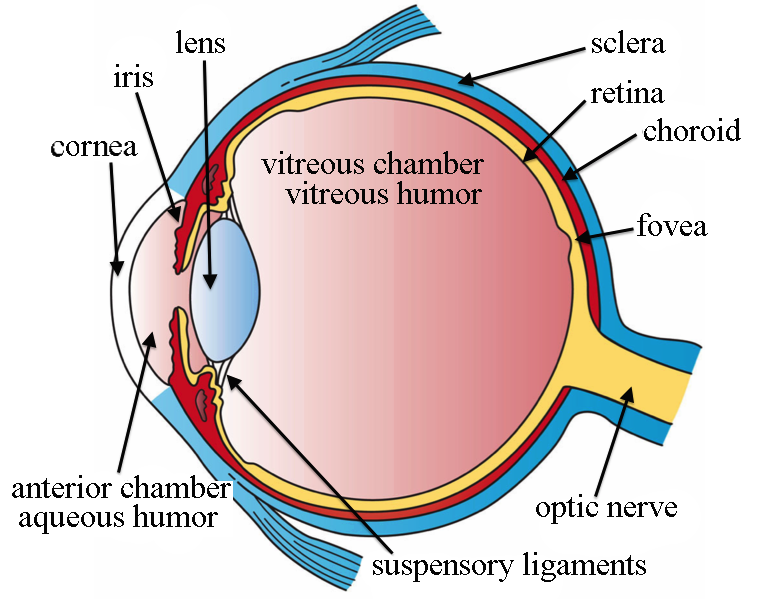
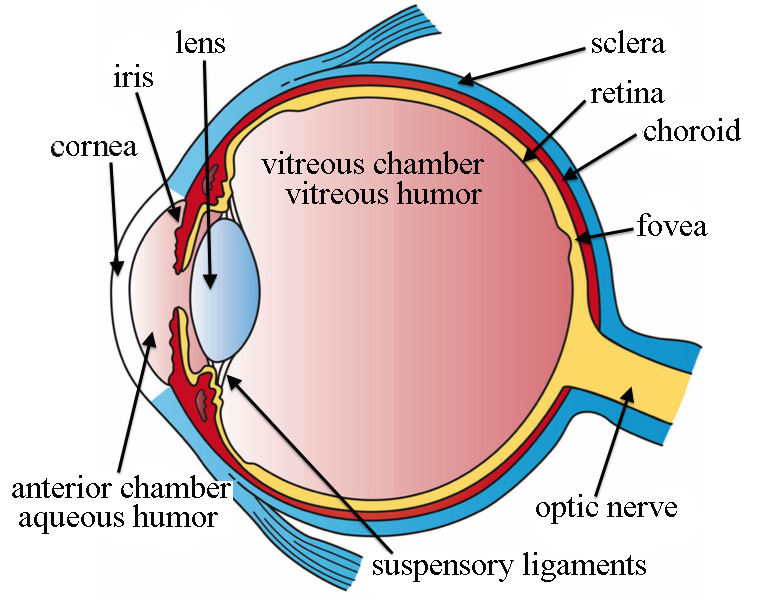
Iris
the muscles that control the pupil (dilates it and contracts it)
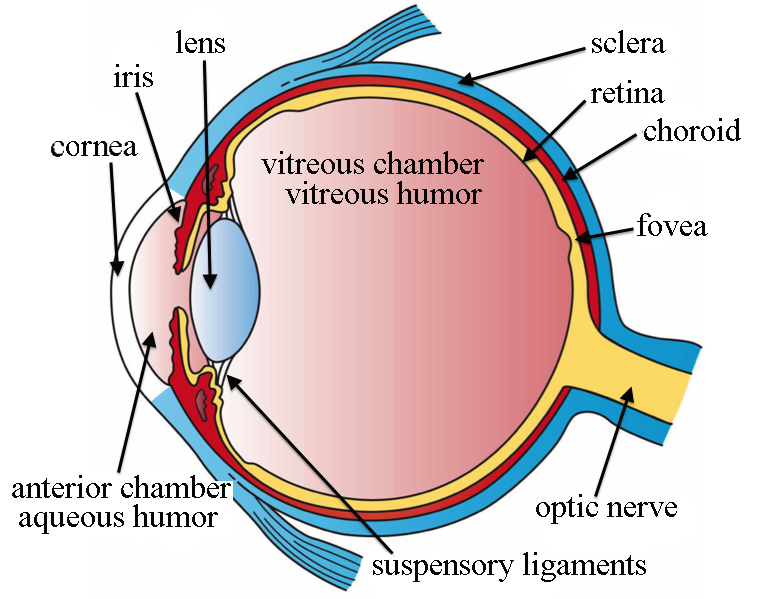

Lens
focuses light from the pupil onto the retina
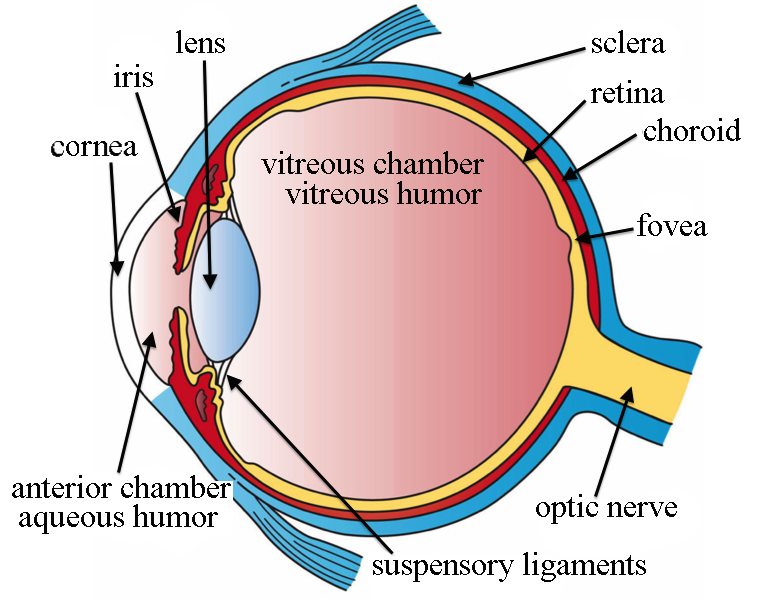
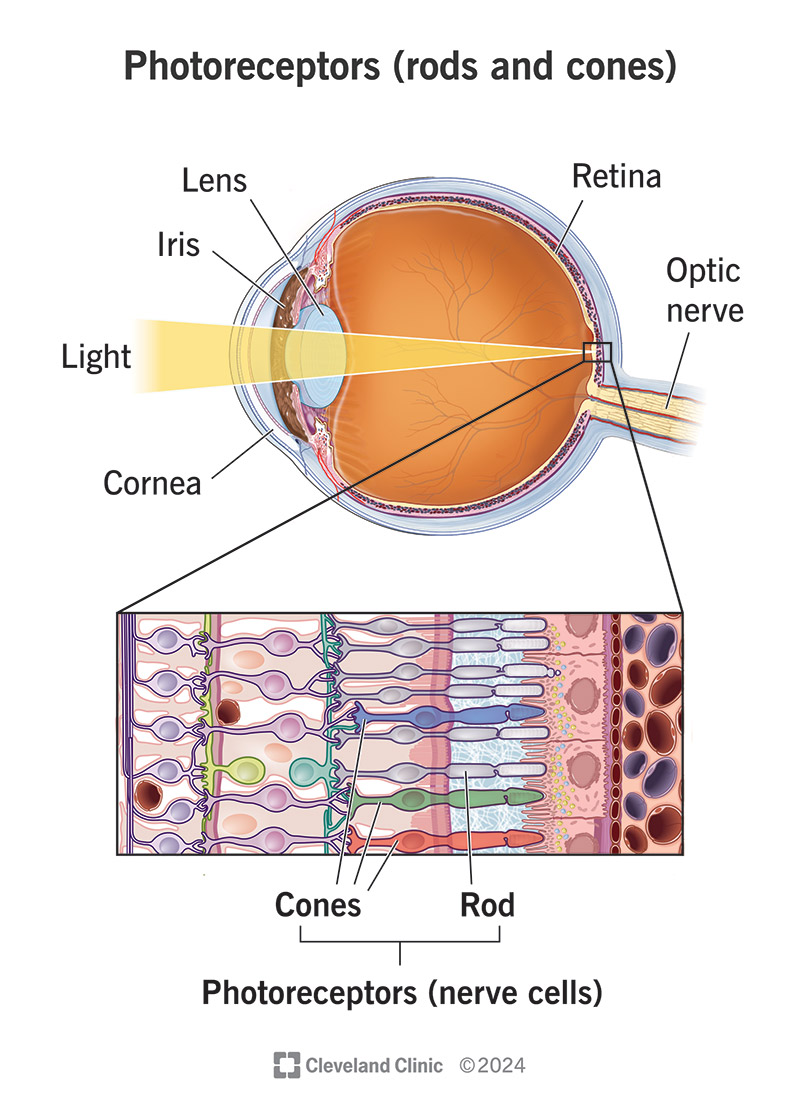
Cones
→ cells that are activated color
→ concentrated towards the center of the retina
→ the fovea has the most amount of cones
→ detect fine details
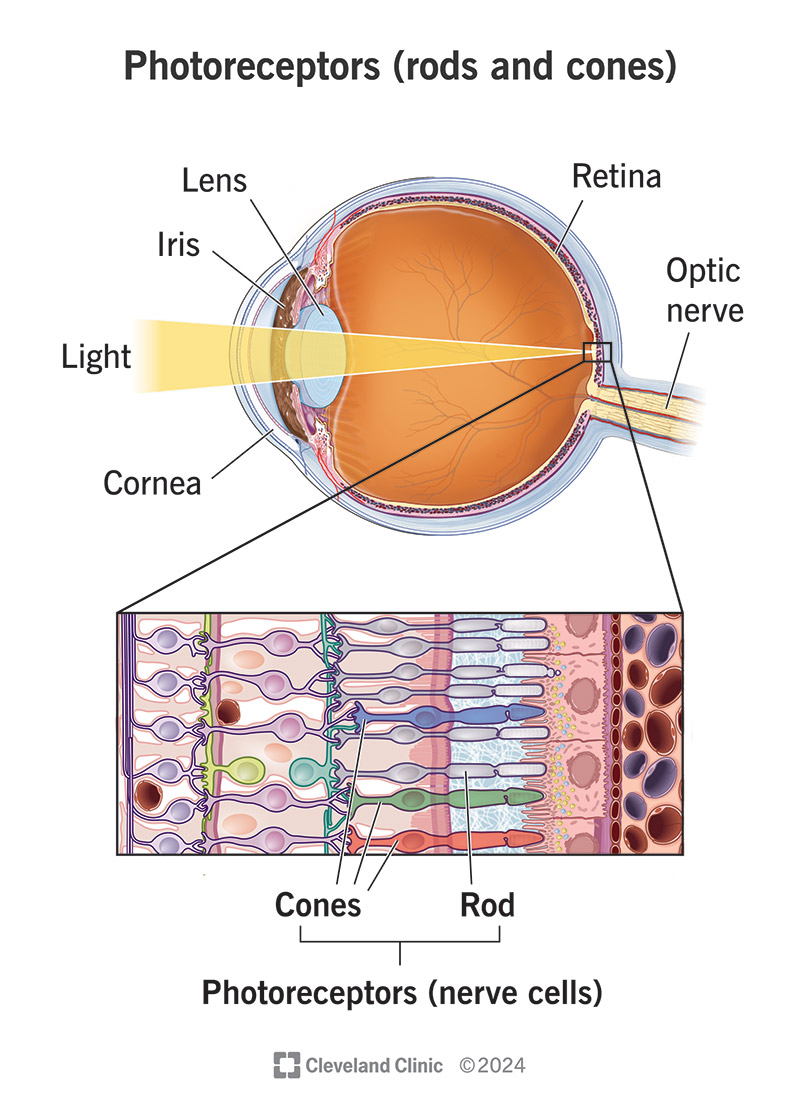
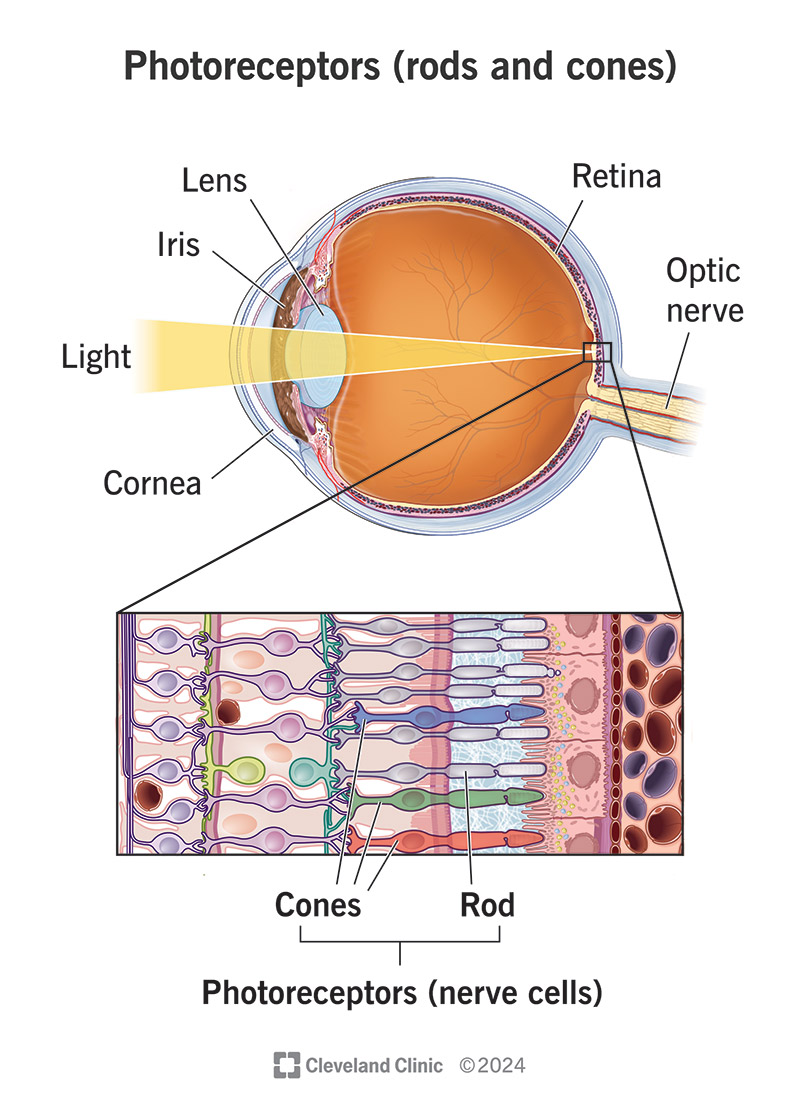
Rods
→ Cells that are activated by black and white
→ Outnumbers cones (20:1)
→ Peripheral vision
→ Sensitive to dim light
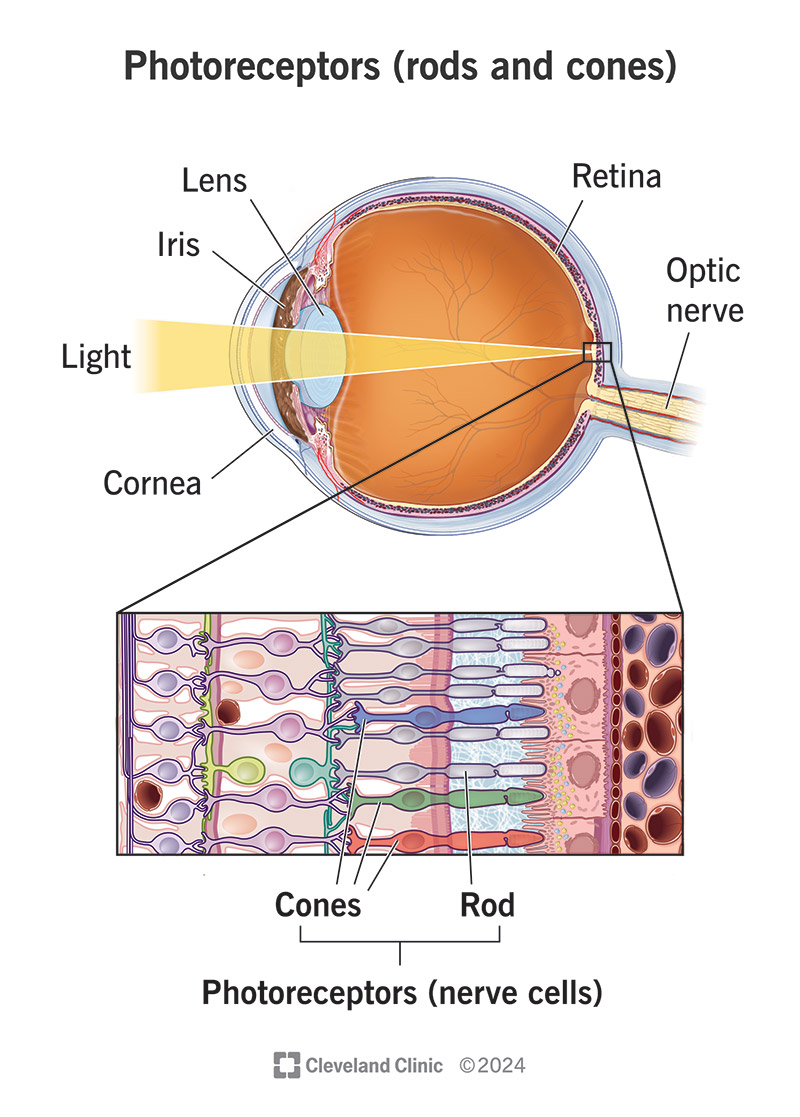
Trichromatic Theory
→ Hypothesizes that we have three different cones in the retina that process three different colors: Red, blue and green (primary colors of light)
→ Doesn't explain afterimages and color blindness
Opponent Process Theory
→ States that sensory receptors in the retina come in pairs: red/green, yellow/blue, black/white
→ Theory explains color afterimages and colorblindness.
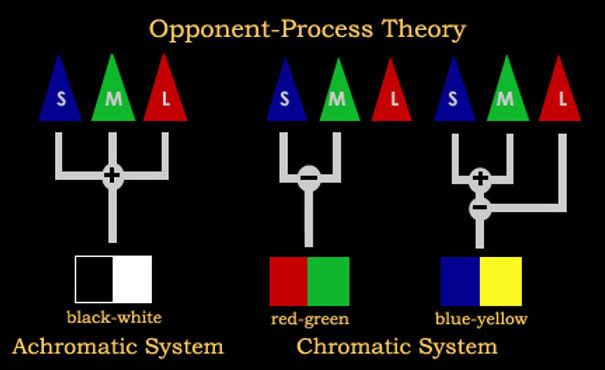
Convergence
the process by which information becomes more complex as it travels through the sensory system, occurring across all sensory systems
serial processing
when the brain computes information step-by-step in a methodical and linear matter
Relative size
Objects that appear smaller are perceived as being farther away.
Texture gradient
The detail of a surface changes with distance — finer/denser textures seem farther away.Textures grow more dense as distance increases.
Interposition occlusion
when a near object partially blocks the view of the object behind it
Linear perspective
parallel lines draw closer together as objects recede into the distance
Vanishing point
point where two lines becomes indistinguishable from a single line and then disappear
Aerial perspective
Objects that are farther away appear bluer, lighter, or hazier due to the scattering of light by the atmosphere.
Relative clarity
Clearer, sharper objects are perceived as closer; hazy or blurry objects seem farther.
Motion parallax
As you move, objects closer to you appear to move faster across your visual field than objects farther away.
Binocular depth cues
rely on both eyes viewing an image
Stereopsis
the three dimensional image of the world resulting from binocular vision
Retinal convergence
a depth cue that results from the fact that your eyes must turn slightly to focus on near objects. The closer the object the more your eyes turn indeed.

Gestalt Approach
Psychological approach emphasizing that we perceive objects as whole patterns or configurations, not just as a collection of parts; Example: Seeing a complete triangle even when only the corners are drawn.
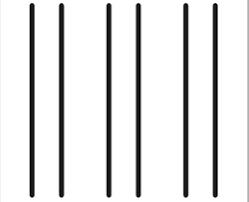
Proximity
Gestalt principle stating that objects close to each other are perceived as a group; Example: Dots clustered together are seen as a single unit.
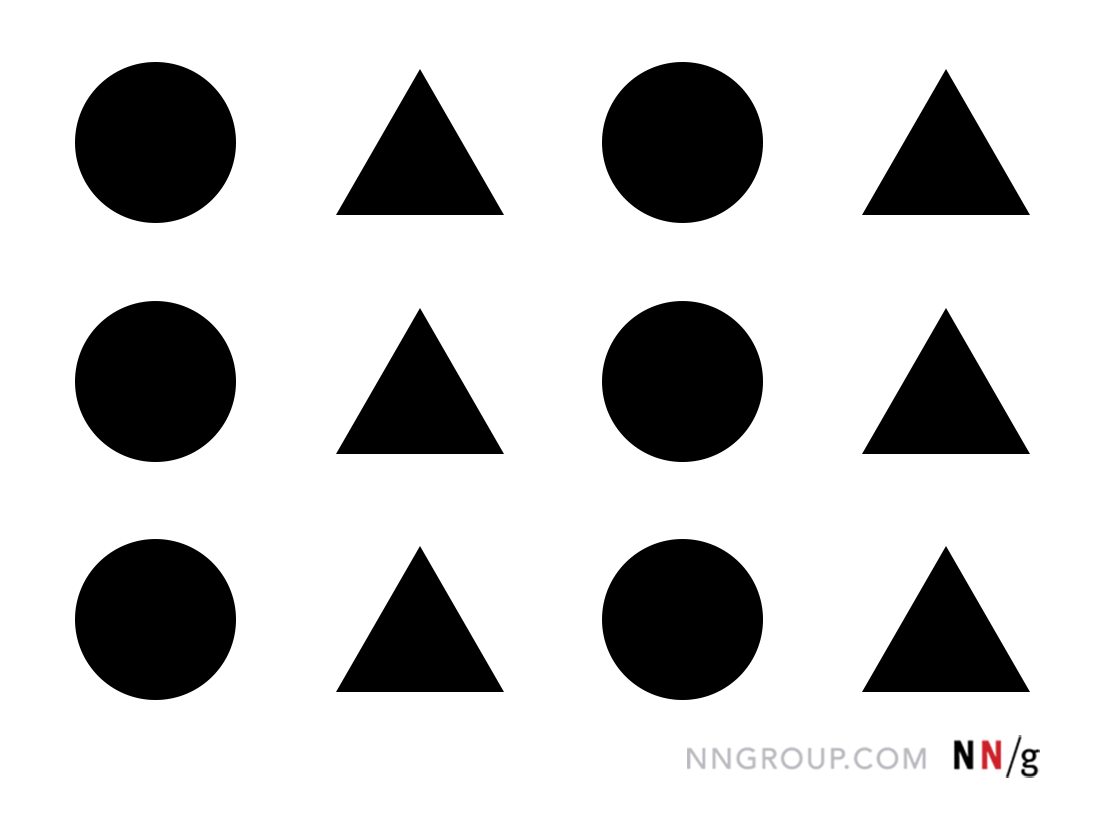
Similarity
Gestalt principle stating that objects that are similar in shape, color, or size are perceived as part of the same group; Example: Circles of the same color in a grid are seen as related.
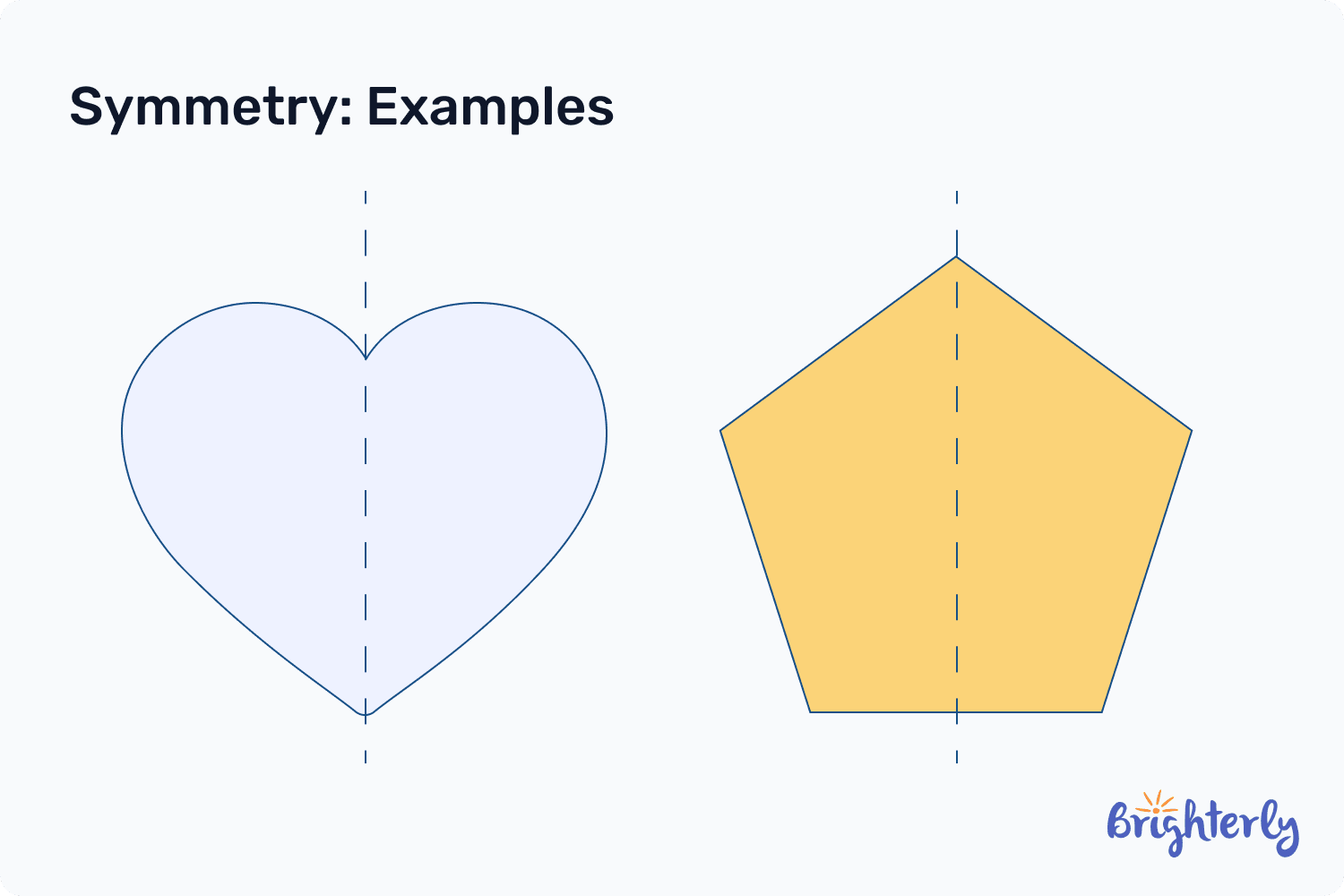
Symmetry
Gestalt principle stating that objects that are symmetrical are perceived as belonging together or forming a unified shape; Example: Two mirrored shapes are seen as a single balanced figure.

Continuity
Gestalt principle stating that we perceive lines or patterns as continuing in smooth, uninterrupted paths; Example: A curved line is seen as a continuous path even if it crosses another line.

Closure
Gestalt principle stating that we tend to fill in gaps to perceive a complete object; Example: A broken circle is perceived as a full circle.
Gate Control Theory
Theory of pain perception proposing that pain signals can be blocked or allowed to pass through “gates” in the spinal cord influenced by factors like attention or emotions; Example: Rubbing a bumped knee reduces pain perception because touch signals “close the gate” to pain signals.
Amplitude
height of wave/ how loud the sound is
Frequency
Length of the waves and determines pitch (how deep or high the sound sounds)
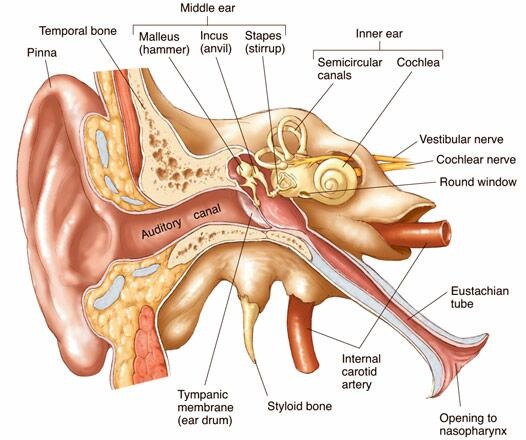
Pinna
collects the sound waves
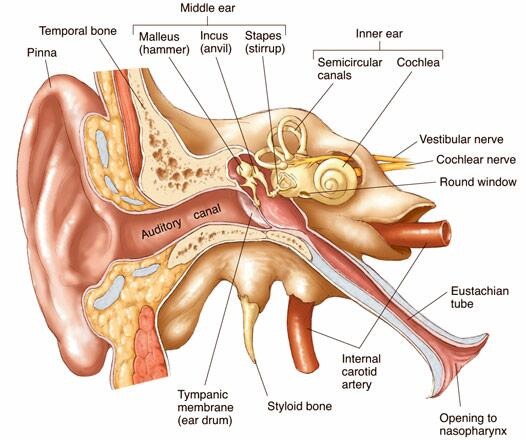
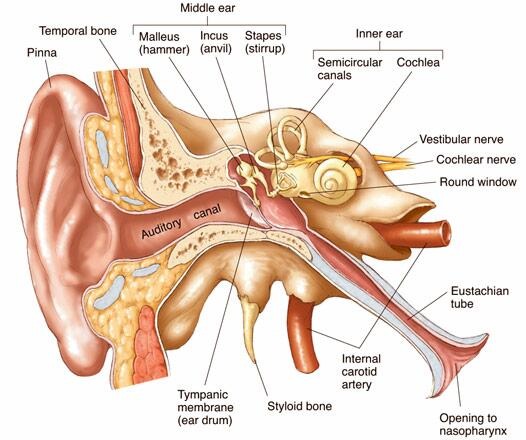
Eardrum (tympanic membrane)
vibrates when the sound waves hit; Vibrations are transmitted by the ossicles (hammer ➡ anvil ➡ stirrup) then go to the oval window
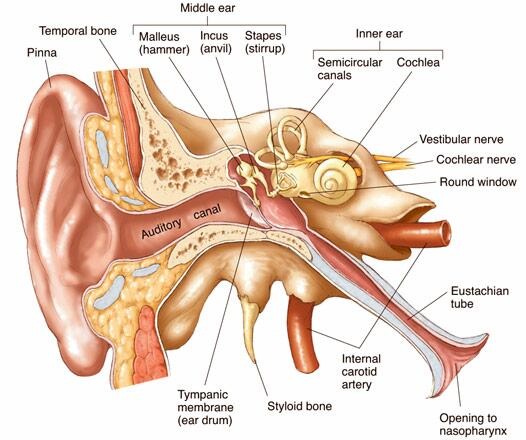
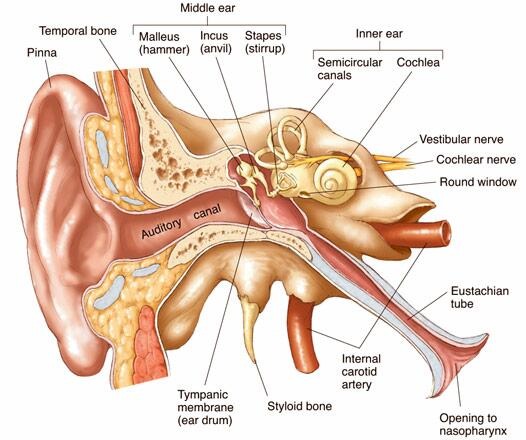
Cochlea
→ snail shapes structure filled with fluid which moves with the vibrations.
→ The floor of the cochlea is the basilar membrane which has hairs cells that are connected to the organ of Corti (neurons activated by the movement in hair cells)
N.B. Balance is controlled by the semicircular canals
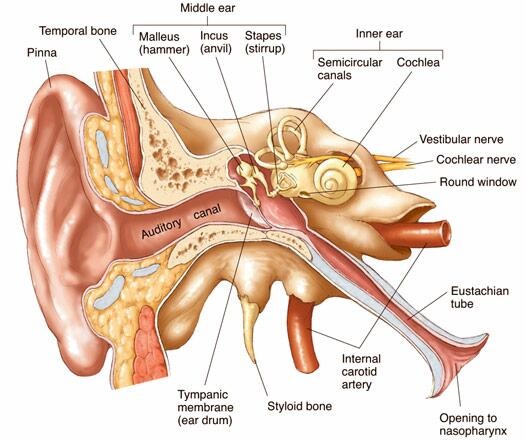
Types of Hearing Loss:
Sensorineural - Damage to the cochlea’s hair cell receptors or the auditory nerve
Conduction - Damage to the mechanical system—the eardrum and middle ear bones—that conducts sound waves to the cochlea
Kinesthesis
the perception of body movement and body location
Sensory adaptation
when you get used to a stimulus and no longer realize it’s there
Sensory habituation
the amount we feel a stimulus is partially based on how much we focus on themS
Sensory dishabituation
occurs when a change in the stimulus causes us to notice it agains
selective attention
by which we try to attend to one thing while ignoring another
Theories explaining selective attention
Filter theories - proposes that stimuli must pass through some form of screen or filter to enter into attention
Attentional Resource theories - posit that we have only a fixed amount of attention and this resource can be divided up as is required in a given situation